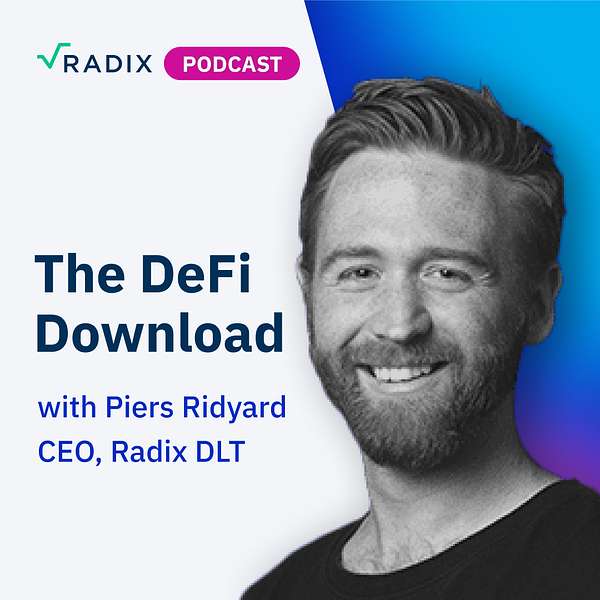
The DeFi Download
The DeFi Download
Parallel Execution: the Radix approach vs Solana/Sui/Aptos/Fuel with Alliance DAO
With Mohamed Fouda, Alliance DAO Contributor
In this special edition of the DeFi Download, Piers Ridyard is joined by Mohamed Fouda, the head of research at Alliance DAO and co-founder of Volt Capital, as well as Matthew Hines, Chief Product Officer of RDX Works. The focus of the discussion is parallel execution within the realm of decentralised finance.
Summary
In today's episode, Piers, Matt, and guest Mohamed Fouda talk about parallel execution in blockchain and smart contracts. They discuss methods for identifying independent blockchain transactions and analyse their benefits and drawbacks, offering examples in AMMs and Ethereum. They cover Radix's parallel execution design, system design layers of abstraction in Cerberus and Babylon, and the drawbacks and implementation complexity of parallel execution. They also discuss the state bloat problem, ways to reduce blockchain history and the pros and cons of horizontal scaling in blockchain technology.
Alliance DAO is a blockchain-based platform that aims to support and invest in promising projects and entrepreneurs in the space. It runs a cohort program for founders and is always looking for smart and passionate individuals who have a long-term commitment to the space.
Key takeaways
- Ethereum, the most well-known blockchain for smart contracts, operates using a single-threaded processor. The limitations of single-thread execution in Ethereum have opened opportunities for other protocols to offer better solutions.
- There are two main approaches to identifying independent transactions in the blockchain. The first approach, where the smart contract defines the state and identifies which transactions have access to which part of the state, was implemented in Solana and the Sealevel execution environment and in Sui (object). The second approach is called "optimistic execution" and is adopted by Aptos.
- It may be necessary to use Optimistic Execution in certain circumstances, but it has its limitations. A benefit of Optimistic Execution is that it pushes the problem to the validator and away from the developer, and hides the complexity from the developer.
- The Radix approach is a hybrid solution that starts with the idea of assets as important and fundamental to the network, with everything represented as resources.
- Parallel Execution can remove the bottleneck of serialisation but can lead to centralisation.
Chapters
[01:53] Mohamed describes parallel execution in the context of blockchain and smart contracts.
[05:14] Single pipeline in Ethereum: A dramatic design choice with compatibility Implications
[08:07] Identifying independent transactions in Blockchain: An overview of two approaches
[13:56] Optimistic model: Advantages, trade-offs, and examples in AMMs and Ethereum
[16:05] Analysis of public ledger usage on Ethereum: Interactions with smart contracts and critique of Optimistic Execution
[20:54] Radix’s design philosophy for parallel execution
[28:36] Layers of abstraction in the system design of Cerberus and the Babylon network
[31:12] Disadvantages of Parallel Execution
[35:14] Implementation complexity
[37:26] The state bloat problem in Blockchain technology
[40:47] Techniques for reducing the size of the Blockchain history
[42:52] Advantages and disadvantages of horizontal scaling in the network
[46:56] Information on Alliance DAO and Mohamed Fouda
Further resources
- Alliance DAO Website: alliance.xyz
- Mohamed’s Twitter: @MohamedFFouda
- Mohamed’s Medium: @fouda